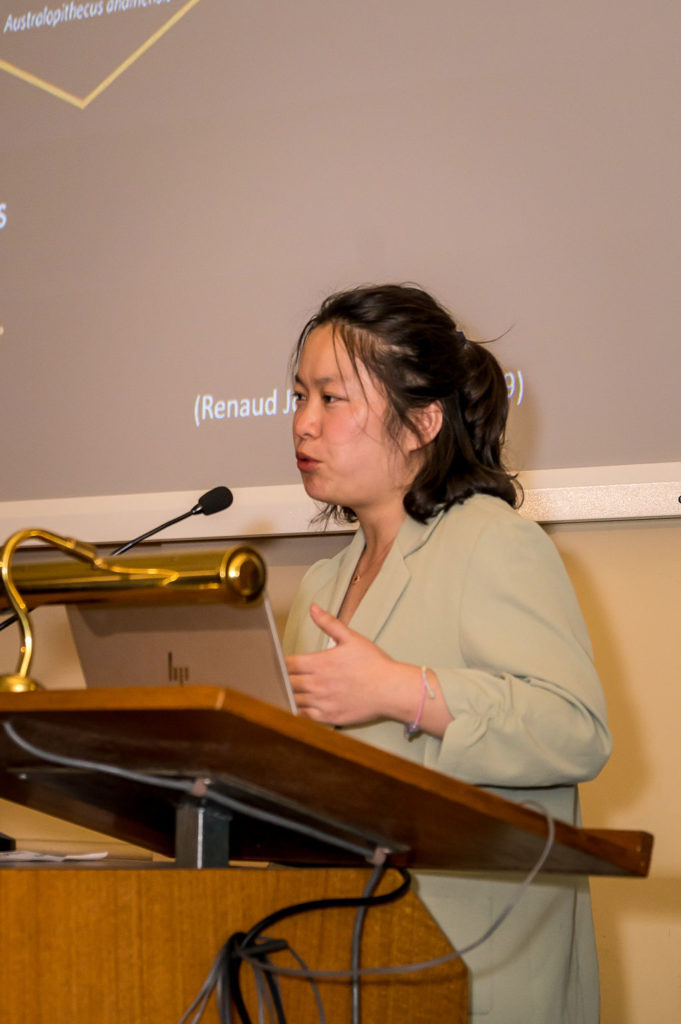Where Do We Come From, and When? The Mystery Behind the Oldest Child
By Dr. Wenjing Yu MRSV
2023 Young Scientist Research Prizes (Earth Sciences) – 1st place winner

Let’s travel back in time, about a million years ago. This story is about a boy – a very, very young boy. He died when he was only three, and part of his body was carried by an eagle and dropped off at the Cradle of Humankind in South Africa. He died millions of years ago, making him the ‘oldest child’ in the world. In 1924, his skull was found by quarrymen in a limestone quarry, now known as the Taung Skull Fossil Site. The skull – and the boy it belonged to – was named the “Taung Child”.
This discovery threw a spanner into the works in the field of human evolution research. Before, the theory of human origin had been largely Eurocentric, assuming the rise of humankind occurred in Europe or Eurasia. But this single fossil suggested otherwise.
This fossil was clearly more ancient than earlier finds and Australian anatomist Raymond Dart, who first analysed it, claimed it was a human ancestor. He classified it as an extinct species of australopithecine (an entirely new genus) called Australopithecus africanus, the “southern ape from Africa”.1 Scientists were initially reluctant to accept that the Taung Child and the new genus Australopithecus were ancestral relatives of modern humans – most believed the skull to be from a non-human ape.
It has been almost 100 years since the discovery of the Taung Child, but the A.africanus lineage evolution still remains in question. Where does it belong on the human – or hominin – family tree?

The question has been difficult to answer because we lack sufficient dating evidence at the Taung site. The unique and complicated rock deposits at the discovery site makes fauna fossil dating very difficult.2,3 Making sense of the relationship of different hominin species in South Africa has always been challenging, largely because of issues dating them accurately.
While the question remains open, the Taung Child itself cannot be used in analyses. It is now protected under the South African Heritage Resources Act and must remain untouched. However, 36 years ago, mammal teeth were also collected in the same layer of rock at the Taung site where the skull was found, meaning that we can assume that they are around the same age. They would, in theory, provide us with the approximate age of the Taung Child.
For the first time in history, we can now directly date these mammal teeth using a combination of technologies. I optimised this method during my PhD, allowing me to date the enamel of teeth older than 3 million years old.4,5 This method has provided two possible age models. If the first model is correct, then the Taung Child skull and A. africanus species could be older than originally suggested, older than 3.33 million years ago and older than the skeleton that is largely regarded as the first human, ‘Lucy’ (A. afarensis). If the second model is correct, Taung Child’s age would be within 3 Ma.
It is not possible to decide which model is more accurate – yet – but investigations of human evolution will continue. The methodology that I developed will allow researchers to better understand human evolution as we endeavour to answer: where or when do we come from?
References:
- Dart, R.A. (1925). Australopithecus africanus the man-ape of South Africa. Nature Publishing Group.
- Kuhn, B.F., et al. (2016). Renewed investigations at Taung; 90 years after Australopithecus africanus. Palaeontologia africana 51:10–26.
- McKee, J.K. (1993). Faunal dating of the Taung hominid fossil deposit. Journal of Human Evolution 25(5):363–376.
- Yu, W., et al. (2022). Using X-rays as an irradiation source for direct ESR dating of fossil teeth. Quaternary Geochronology 72:101372.
- Yu, W., et al. (2022). ESRfrag: A new suite of open access programs for the efficient handling of Electron Spin Resonance spectra of enamel fragments. Quaternary Geochronology 71:101335.
Video Presentation
The Royal Society of Victoria annually awards four competitive prizes to final year PhD students in all areas of the Biomedical & Health Sciences, Biological Sciences (Non-human), Earth Sciences, and Physical Sciences. In September 2023, we heard from this year’s eight finalists about their brilliant work in these fields. In the following months, they have shared a written summary of their presentations in Science Victoria.
For more information about the RSV’s Young Scientist Research Prize, visit rsv.org.au/young-scientist-research-prizes
Read more from the finalists of the 2023 RSV Young Scientist Research Prizes:
Gusts in the Headwind, by Dr Grace Lawrence MRSV
Looking at Clouds in the Sky is More Complex Than You Think, by Estefania Montoya Duque MRSV
Getting Back on Track, by Sarah Mele MRSV
Harnessing Immune Cells in the Bowel to Fight Cancer, by Marina Yakou MRSV
The Lighter Side of Building Bionic Eyes, by William Kwan MRSV
Where Do We Come From, and When?, by Dr Wenjing Yu MRSV
How Fire Shapes Plant Life Cycles, By Ella Plumanns Pouton MRSV








